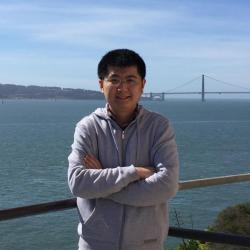
Wireless electronic devices are everywhere in our daily lives with applications ranging from data communication to energy transfer and biomedical sensing. Power amplifier (PA) interfaces the antenna and governs the energy efficiency of a wireless transceiver. Its linearity is also of paramount importance to ensure the signal fidelity. Moreover, its broadband operation is highly desired for high-speed communication and high-resolution sensing. However, integrating a PA in silicon entails challenges due to the PA’s nature of large-signal and highly dynamic operation. Meanwhile, the silicon platform has become one of the finest manufacturing capabilities that human beings have ever created. Device scaling in the front-end-of-line processes has empowered the silicon platform unprecedented and unmatched mixed-signal (digital and analog) processing capabilities and the back-end-of-line processes offer the super-flexible and ultra-fine lithography of interconnections.
My research exploits the energy-efficient mixed-signal computation and novel on-chip electromagnetic structures to enable intelligent RF/mm-wave large-signal operation in silicon. This talk will present silicon implementations based on these design methodologies. I will first introduce a multiband millimeter-wave PA in silicon for fifth-generation (5G) communication. Mixed-signal reconfiguration and a novel on-chip power combiner enable its broadband operation. Then, I will present a digital Doherty PA in silicon. Flexible and precise digital control optimizes in-field Doherty efficiency enhancement and enables robustness against antenna mismatch. Lastly, I will introduce hybrid PA efficiency enhancement techniques enabled by digital-intensive architectures in silicon. Mixed-signal linearization eliminates the trade-off between efficiency and linearity in these architectures. These examples extend the boundary of RF/millimeter-wave large-signal circuits in silicon from various perspectives and illustrate the introduced paradigm-shift design methodologies that open doors to future silicon solutions.
Mr. Hu was the winner of the Best Student Paper Award (First Place) of the 2014 IEEE Radio Frequency Integrated Circuits (RFIC) Symposium and the Best Student Paper Award of the 2011 IEEE Radio Frequency Integration Technology (RFIT) Symposium. He was also the co-recipient of the 2016 IEEE Microwave Magazine Best Paper Award and the Best Student Paper Award (Second Place) of the 2015 IEEE Custom Integrated Circuits Conference (CICC).
Mr. Hu received the 2016 Georgia Tech ECE Roger P. Webb Graduate Research Assistant Excellence Award, the 2015-2016 IEEE Solid-State Circuits Society (SSCS) Predoctoral Achievement Award, the 2015 IEEE Microwave Theory and Techniques Society (MTT-S) Graduate Fellowship, and the 2014 Analog Devices Inc. Outstanding Student Designer Award. He was also the recipient of the Southeast University President’s Scholarship in 2006, the National Scholarship in 2007, the first prize in the National Undergraduate Electronic Design Contest in 2008, the Microsoft Young Fellowship Award from Microsoft Research Asia in 2008, the Marvell Fellowship in 2011, the Shanghai Outstanding Graduate Student Award in 2012, and the Shanghai Excellent Master Thesis Award in 2013.
